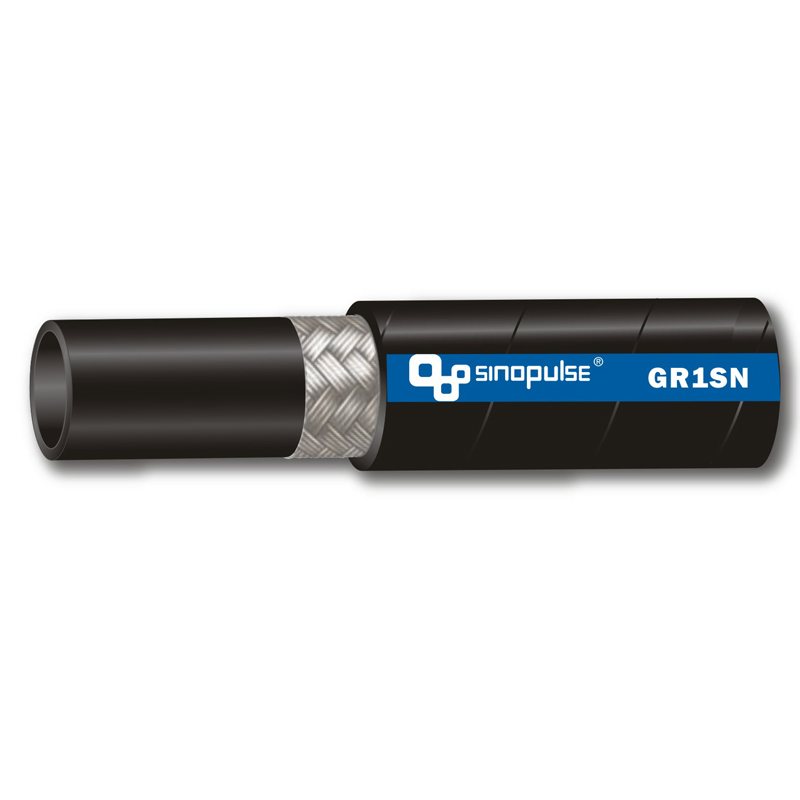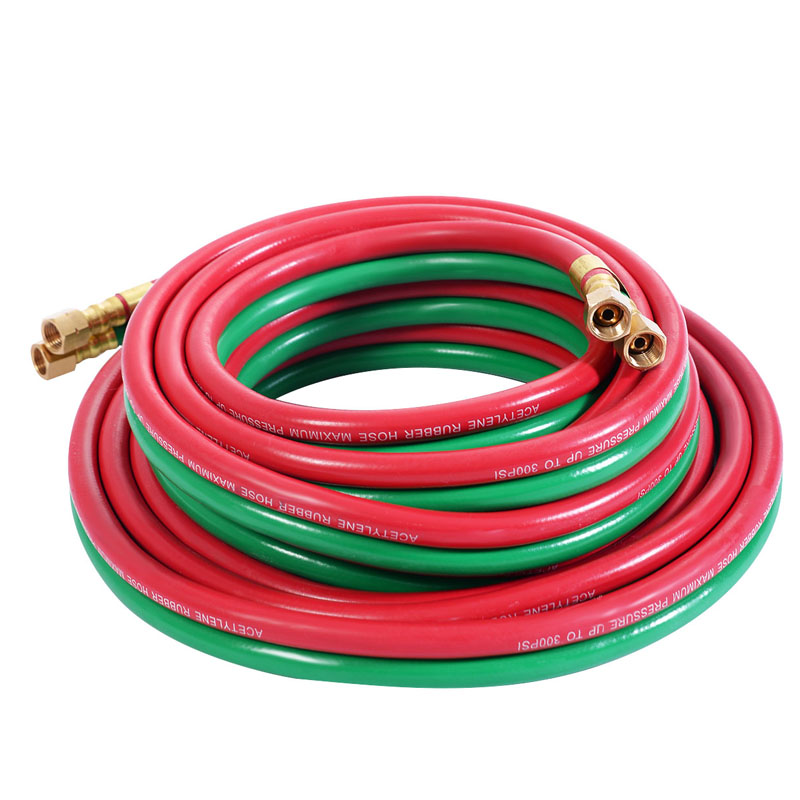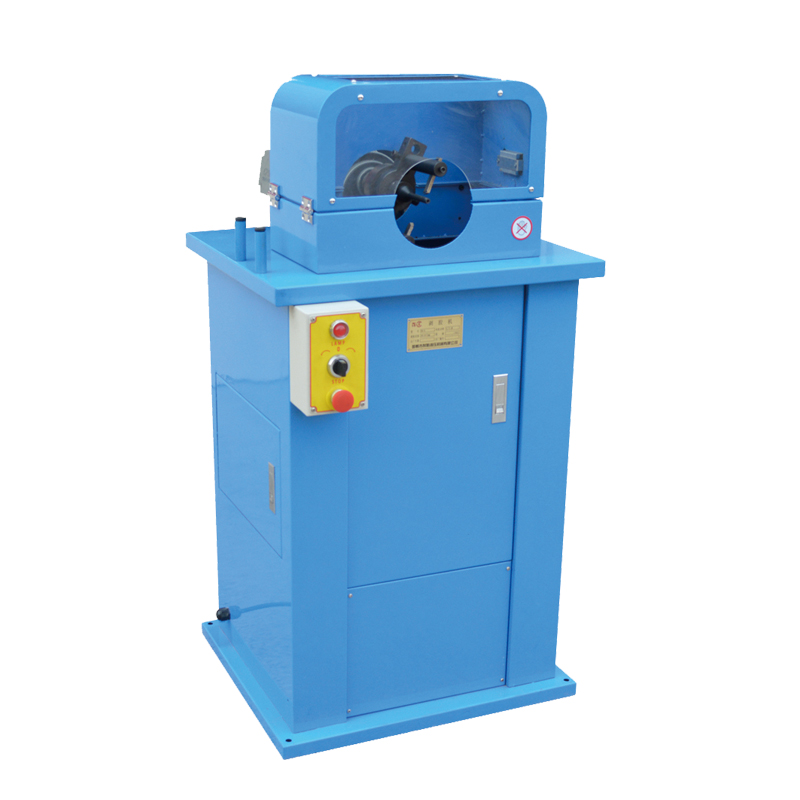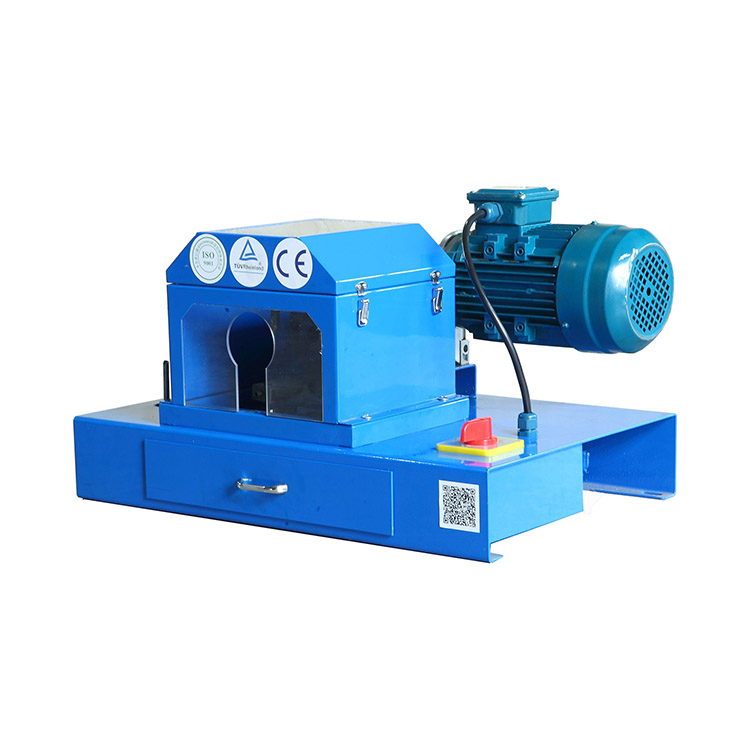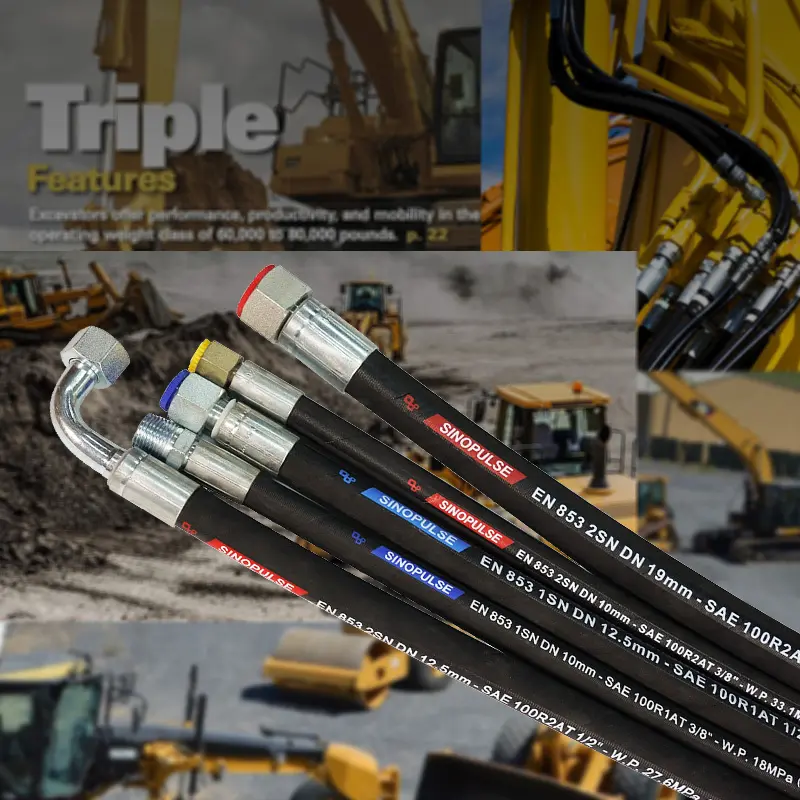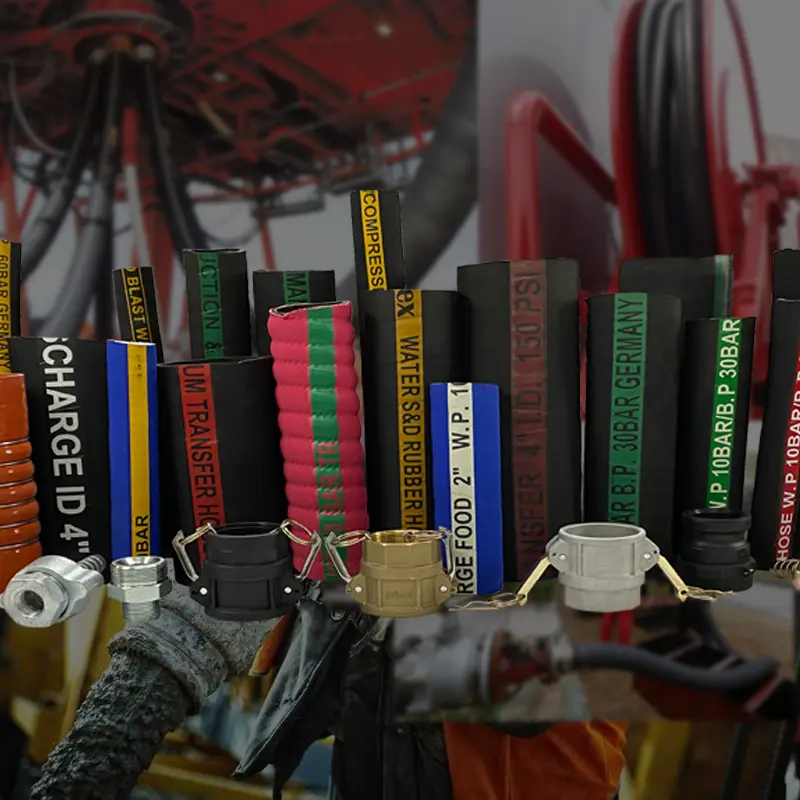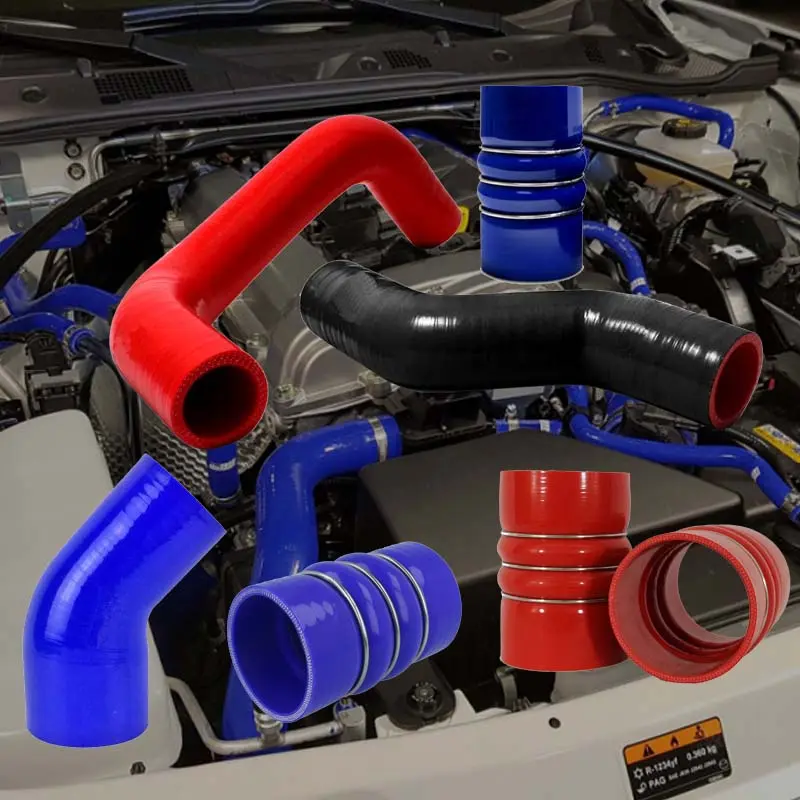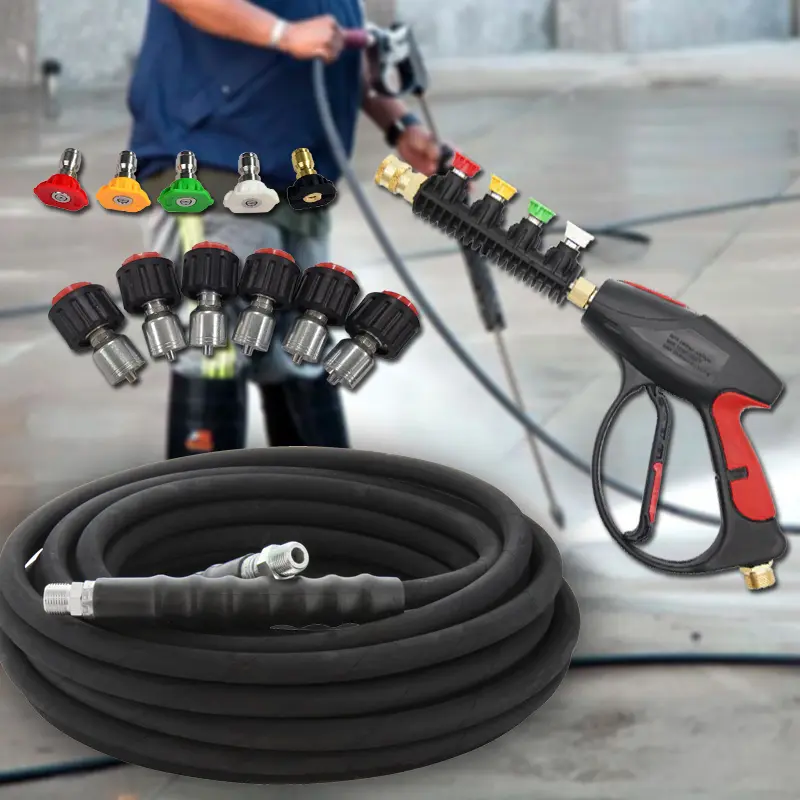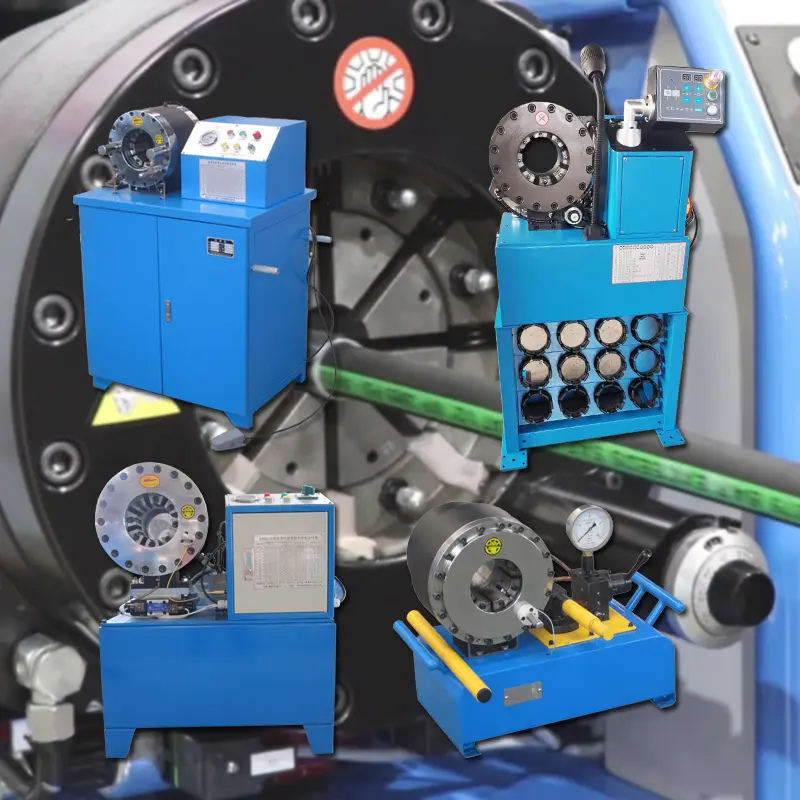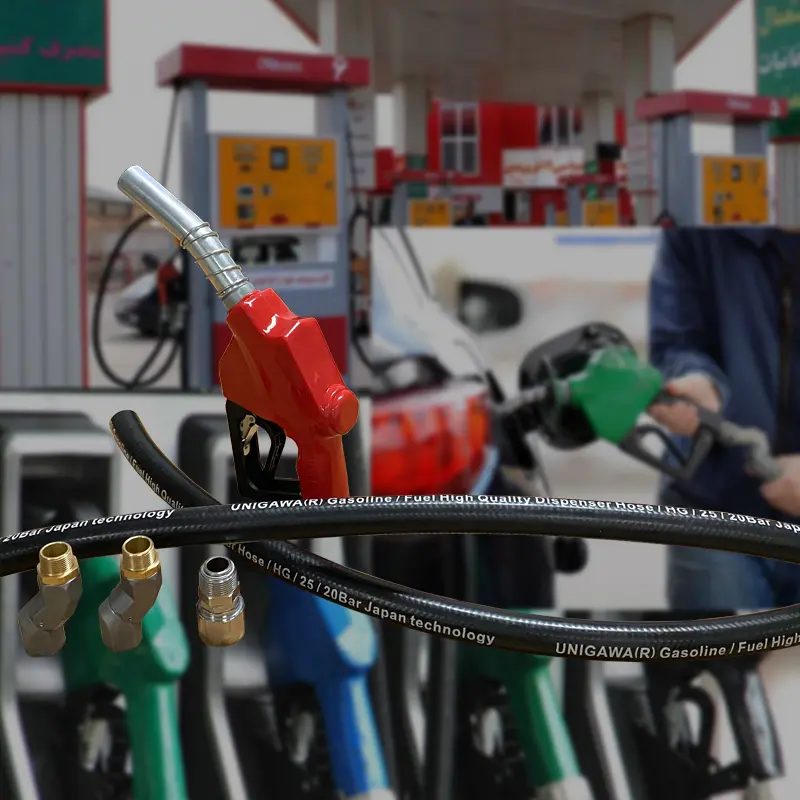In the complex world of hydraulic systems, selecting a hose with the right pressure rating is critical to ensuring safety, efficiency, and longevity. As a leading ຜູ້ຜະລິດທໍ່ໄຮໂດຼລິກ, we recognize that misunderstanding terms like "working pressure" and "burst pressure" can lead to costly failures. This guide demystifies these ratings, explores how they vary across hose types, and provides practical advice for choosing the ideal hose for your system.
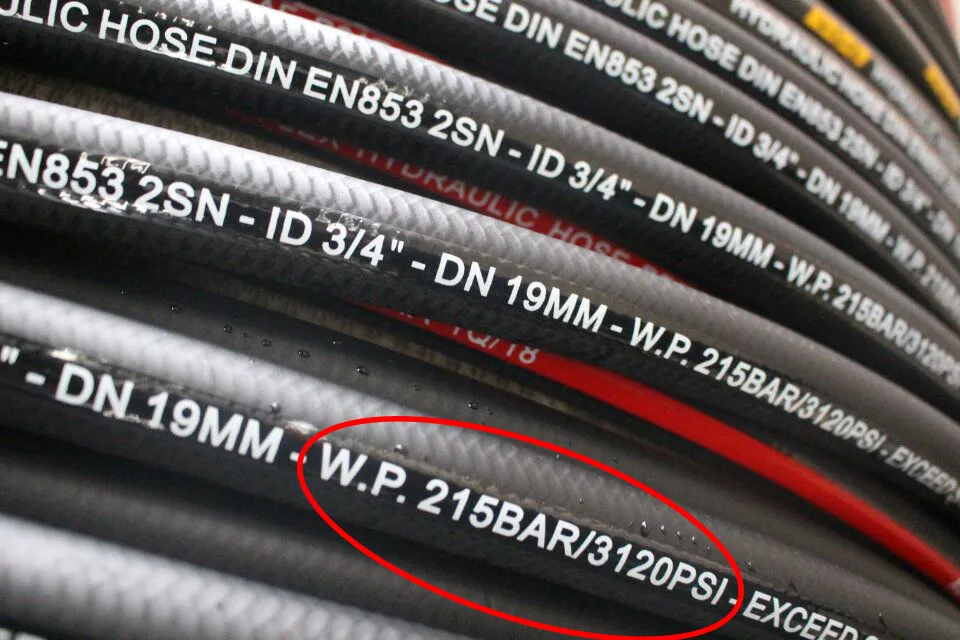
The Foundation of Hydraulic Pressure Hose: Working Pressure vs. Burst Pressure
1. Working Pressure: The Safe Operational Limit
ໄດ້ ຄວາມກົດດັນໃນການເຮັດວຽກ of a hydraulic hose is the maximum continuous pressure it can safely handle during normal operation. This rating is determined by factors like hose construction, material strength, and industry standards (e.g., SAE 100R, ISO 1402). For example, a hose rated for 3,000 PSI working pressure is designed to operate reliably under that load indefinitely, provided it’s maintained correctly.
2. Burst Pressure: The Ultimate Strength Threshold
Burst pressure refers to the pressure at which a hose will fail catastrophically, such as through a rupture or blowout. Industry standards typically require burst pressure to be 3–4 times the working pressure, creating a safety margin to account for pressure surges or unexpected loads. A hose with a 3,000 PSI working pressure, for instance, might have a burst pressure of 12,000 PSI, ensuring it can withstand transient spikes without failing.
Why the Difference Matters
- Safety: The safety factor (burst pressure ÷ working pressure) ensures hoses can handle occasional pressure surges common in hydraulic systems.
- Compliance: Adhering to these ratings helps meet international safety standards, reducing liability and operational risks.
Pressure Ratings Across Hydraulic Hose Types
1. Braided Hydraulic Hoses
- ການກໍ່ສ້າງ: Single or double layers of textile or steel braiding reinforce the inner tube.
- ຄວາມກົດດັນການເຮັດວຽກ: 2,000–6,000 PSI, ideal for medium-pressure applications like industrial machinery or agricultural equipment.
- ຄວາມກົດດັນລະເບີດ: 6,000–24,000 PSI (3x working pressure for single braid, 4x for double braid).
- Best For: Systems with moderate pressure and frequent movement, where flexibility is key.
2. Spiral Hydraulic Hoses
- ການກໍ່ສ້າງ: Helical steel wire spirals provide superior reinforcement.
- ຄວາມກົດດັນການເຮັດວຽກ: 5,000–10,000 PSI, suitable for high-pressure environments like construction cranes or hydraulic presses.
- ຄວາມກົດດັນລະເບີດ: 15,000–40,000 PSI (3x working pressure), offering robust protection against sudden pressure spikes.
- Best For: Heavy-duty applications requiring consistent high pressure and durability.
3. Ultra-High-Pressure Hydraulic Hoses
- ການກໍ່ສ້າງ: Multiple layers of heavy-duty steel spirals or composite materials.
- ຄວາມກົດດັນການເຮັດວຽກ: 10,000–30,000 PSI, designed for extreme applications like oil well fracturing or aerospace systems.
- ຄວາມກົດດັນລະເບີດ: 30,000–120,000 PSI (3x working pressure), ensuring safety in environments where failure is not an option.
- Best For: Systems operating at the upper limits of hydraulic power.
How to Select a Hydraulic Hose Based on System Pressure
1. Determine Your System’s Maximum Pressure
- Measure the continuous operating pressure and identify peak surges (e.g., during rapid valve closure).
- For example, a system with a steady 2,500 PSI load and occasional 3,000 PSI surges needs a working pressure rating of at least 3,000 PSI.
2. Apply the Safety Factor
- Follow industry-standard safety factors (3x or 4x) to calculate the required burst pressure.
- Example: A system with a 4,000 PSI working pressure should use a hose with a burst pressure of 12,000 PSI (3x) for most industrial applications.
3. Consider Fluid and Environmental Factors
- Fluid Compatibility: Aggressive fluids like solvents may degrade hose materials, reducing effective pressure ratings.
- Temperature Impact: High temperatures (over 120°C) can lower working pressure capacity; ensure the hose’s temperature rating matches your environment.
4. Check for Standards Compliance
- Look for certifications like SAE 100R12 (high-pressure spiral hoses) or ISO 6803 (hydraulic hoses for mobile equipment) to guarantee quality and safety.
Hydraulic Pressure Hose: Real-World Application Scenarios
1. Industrial Machinery
- Challenge: Medium-pressure systems (1,500–4,000 PSI) with moderate vibration and movement.
- Solution: A double-braided ທໍ່ໄຮໂດຼລິກຄວາມກົດດັນສູງwith a 4,000 PSI working pressure and 16,000 PSI burst pressure, ensuring reliability in CNC machines or robotic arms.
2. Construction Equipment
- Challenge: High-pressure, high-impact environments (5,000–8,000 PSI) with frequent pressure surges from bucket loading or boom articulation.
- Solution: A spiral-reinforced hose rated for 6,000 PSI working pressure and 18,000 PSI burst pressure, capable of withstanding the rigors of excavators or cranes.
3. Oil and Gas Exploration
- Challenge: Ultra-high pressures (15,000+ PSI) in offshore rigs or fracking operations, where failure could lead to environmental hazards.
- Solution: An ultra-high-pressure hose with a 20,000 PSI working pressure and 60,000 PSI burst pressure, compliant with API standards for safety and performance.
Hydraulic Pressure Hose: Common Misconceptions to Avoid
1. Higher Burst Pressure Always Means Better
While a higher burst pressure indicates strength, it also adds weight and stiffness. Choose the minimum rating that meets your safety factor to optimize flexibility and cost.
2. Working Pressure Can Be Exceeded Temporarily
Even short-term overpressure can damage internal layers, leading to premature failure. Always design for the worst-case scenario.
3. All Hoses Meet the Same Standards
Certifications vary by region and application. Ensure your hose complies with the specific standards of your industry (e.g., EN 856 for European hydraulic systems).
Understanding the balance between working pressure and burst pressure is essential for selecting a hose that protects your equipment, team, and operations. As a trusted source for ທໍ່ໄຮໂດຼລິກສໍາລັບການຂາຍ , we offer a wide range of options—from medium-pressure braided hoses to ultra-high-pressure spiral designs—each engineered to meet precise pressure requirements while adhering to global safety standards.
Whether you’re upgrading an industrial line or outfitting a new construction fleet, prioritizing correct pressure ratings ensures your hydraulic system operates at peak efficiency without compromising safety. Explore our comprehensive catalog today and discover how choosing the right hose can transform your operations from vulnerable to invincible.
ຄໍາຮ້ອງສະຫມັກຜະລິດຕະພັນ










